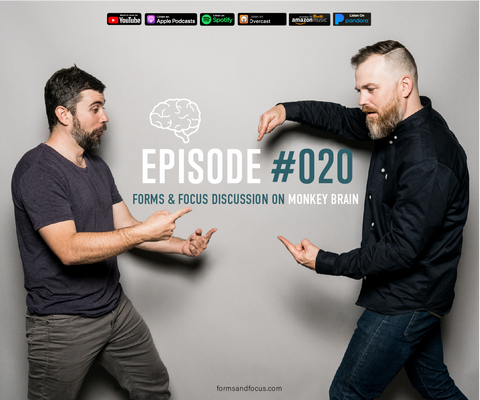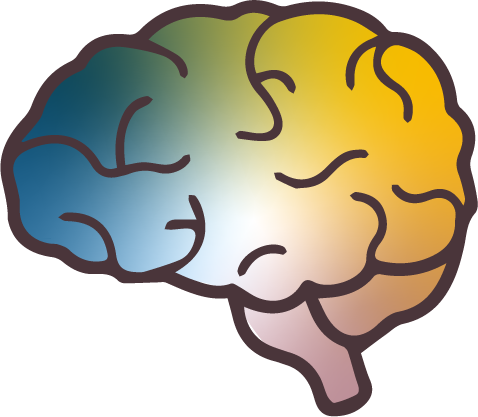
#20 Forms and Focus Discussion on The Monkey Brain
SUMMARY
We live in our monkey brains, the “monkey brain” includes the majority of our tissue, and controls more complex tasks as well as emotions. Most mammals lead with their “monkey brain”, which is fueled by our most basic responses to fear and desire.
At Forms & Focus, our mission is to increase your focus so you can accomplish your dreams. Many of us have dreams and goals. What keeps us from them is our inability to remove distractions and focus. We will accomplish our mission by providing you with guided forms that manifest radical focus.
0:00 - Intro
0:55 - Problem - Your Monkey Brain is killing your focus.
8:40 - Solution/Habits for better focus.
LISTEN TO EPISODE
WATCH EPISODE
SHOW NOTES FOR EPISODE #20
PROBLEM
- STRESS.ORG: Our brain can be separated into three sections: our lizard brain, our monkey brain, and our human brain…
- The “lizard brain” is found at the base of the brain, and contains the cerebellum and brainstem. Lizards only have these elements of the brain, which controls our most basic instincts.
- The next part of the brain, the “monkey brain” includes the majority of our tissue, and controls more complex tasks as well as emotions. Most mammals lead with their “monkey brain”, which is fueled by our most basic responses to fear and desire.
- The most advanced part of the brain is the “human brain”, which consists of the outer layer. This area allows for logical, emotionless thought, as well as delayed gratification.
- Psychology Today: According to Buddhist principles, the “monkey mind” is a term that refers to being unsettled, restless, or confused. Writer and Buddhist Natalie Goldberg, who teaches many writing workshops, suggests that the monkey mind is the inner critic…
- It’s the part of your brain most connected to the ego, which contends that you can’t do anything right. It’s also the part of you that stifles creativity and prevents you from moving forward with your passions.
- Science.org by TIMOTHY J. BUSCHMAN AND EARL K. MILLER talks about Top-Down Versus Bottom-Up Control of Attention in the Prefrontal and Posterior Parietal Cortices.
- Top-Down (or ‘Voluntary focus’). This is generated mostly in the Prefrontal Cortex. Top-down focus is goal oriented. It’s responsible for seeing the bigger picture and uses your past experiences to figure things out.
- Bottom-Up (or ‘Stimulus-driven focus’). This is generated mostly in the Periential Lobe. When a thought creeps up on you or something around you grabs your attention (like a ping, bing, or notification) you’re suffering from Bottom-Up focus. You can’t help but pay attention to what’s happening.
- According to a University of California Irvine study, “it takes an average of 23 minutes and 15 seconds to get back to the task.”
SOLUTION/HABITS
- Do everything you can to stay in the present.
- Reduce involuntary distractions, increase Intentional breaks.
- Apologize immediately and move on.
- Breath and Exercise
- Scheduling seemingly distracting tasks (email: University of British Columbia, checking email 3 days a day reduced stress.
FIND US AT:
Podcast Available Everywhere
https://formsandfocus.com/
https://www.instagram.com/formsandfocus/
https://www.tiktok.com/@formsandfocus
#focus #dream #monkeybrain

Comments (0)
There are no comments for this article. Be the first one to leave a message!